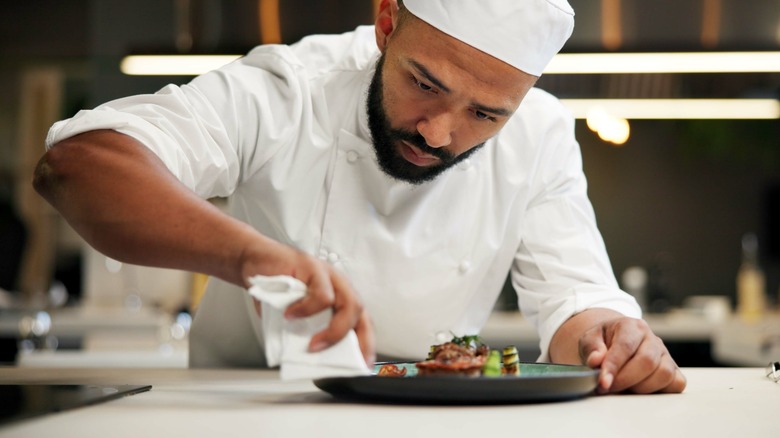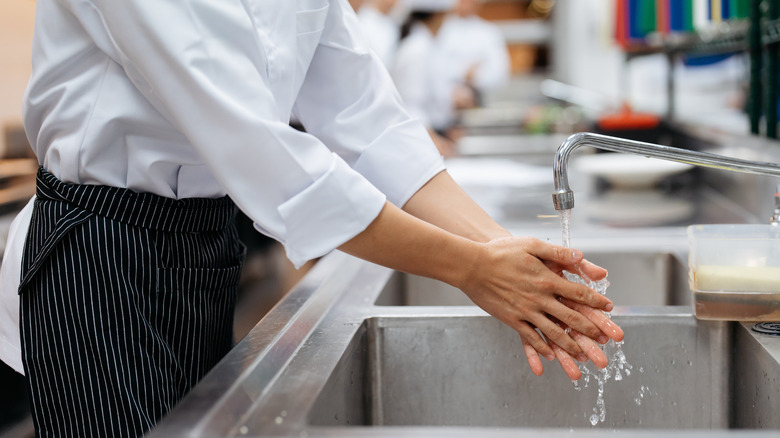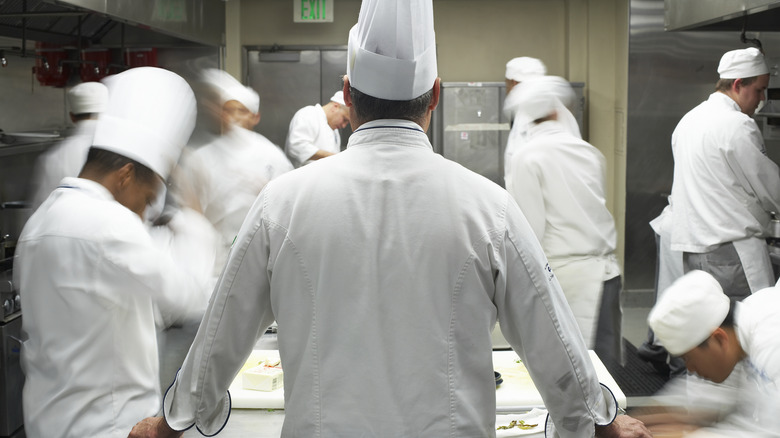What Does It Mean If A Chef Is A CDC?
The restaurant world — whether in your own backyard or clear across the country — is full of whimsical words and phrases as chock full of imagery and lore as an old sea shanty. Some of the most famous were originally intended for back of house, but these phrases proved too irrepressible to keep from the common consciousness.
Today, plenty of people know that "Adam and Eve on a raft" translates to two eggs on toast. "Wreck 'em," too, and you've specified scrambled. Likewise, the number 86 conjures images of sold out specials and overserved patrons about to be bounced. And, as the hospitality industry seems to attract greater public interest every season — thanks, in part, to shows like "The Bear" — the curiosity about its lingo does, too.
Although it's less evocative than, say, "dying on the pass" (meaning a plate sat out too long to be served), "CDC," is, ironically, one such enigma. In the food business, CDC is simply an abbreviation for the French "chef de cuisine," which is the kitchen's head chef. This phrase's French origin and its alphabetical overlap with a U.S. federal agency seem to be the sources of some misconceptions.
A restaurant CDC has nothing to do with the Centers for Disease Control
Barring some kind of superhero and villain alter ego scenario, a CDC in any kind of hospitality setting has nothing to do with the CDC in a public health setting. They share not only an initialism, but also broad enough plausible themes — food and safety — that a reasonable person could conceptually link them. However, this is just a strong coincidence. It's like the typoglycemia evidenced by garbled words in ancient internet spam: Your brain bridges gaps to form a whole. The bridge from restaurant CDC, however, to government CDC (which is actually more likely to help you determine which restaurants to avoid), just doesn't really go anywhere. The two are ultimately unrelated.
What does a CDC actually do?
Ask a hundred chefs de cuisine what they do and you'll get a thousand answers. While the poofy white toque might be the most famous, head chefs wear a lot of hats in the kitchen. This can include not only the artistically enriching work of authoring a menu — the meticulous trial and error required to get every bite just right — but also a fair share of paper pushing, cleanup, and people managing.
Notwithstanding big corporate ownership or smaller independent owners, as head chef, the chef de cuisine is a kitchen's leader. Even if they aren't the final boss, the CDC ranks high in a restaurant's hierarchy. And anyone who has been the boss — either in a business setting or even just over dinner in their own kitchen — has to know how, and be willing to do, a little bit of everything. Or they might just find themselves 86'd.


